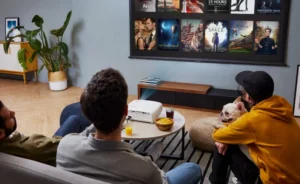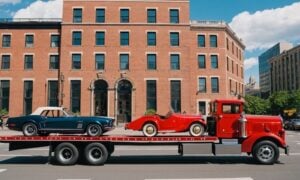Lord of the Rings’ ring was made by a jeweler who died just before release

Practical. Solid. Ageless. Unadorned. Heat until it reveals the Tengwar text of the Black Speech of Mordor. It can morph to the wearer’s liking without losing its integrity.
These are Peter Jackson’s “Rules of the One Ring,” recalled by Dan Hennah, supervising art director on the Lord of the Rings trilogy, from his home in Nelson, New Zealand. “It was a reasonably simple brief, but it was very specific.”

The Lord of the Rings films’ 20th anniversary is in 2021. We couldn’t have imagined exploring the entire trilogy in one story. Each Wednesday, throughout 2019, we will go back and forth between the two locations, looking at how and why these films are still considered classics. This is Polygon’s Year of the Ring.
Hennah knew exactly who had the skill and aesthetic to forge the most famous piece of jewelry in Western literature: Danish-born artist Jens Høyer Hansen. Hansen was a physical giant with an enormous personality and was already known as one of New Zealand’s most prominent contemporary artists. Hansen was a trained jeweler, but also a smith, sculptor, and has been creating bold statement pieces ever since the 1960s.
“He was capable of understanding [the brief] without needing to put his own stamp on it,” Hennah explained. Plus, “he was never mean with his gold.” (Unlike some dragons we know.)
Hansen didn’t get to see Hansen’s tiny creation on the bigscreen. He was diagnosed with pancreatic cancer shortly after his 1999 work began on the One Ring. He died four months later from the condition at the young age of 59.
As Halfdan Hansen, Jens’ eldest son and current manager of Jens Hansen Gold & Silversmith, told Polygon, seeing his father’s design on screen without him “was definitely a moment of bittersweetness for my brother and I.”
The films’ success introduced a global audience to Hansen’s work, and customers around the world now purchase the official licensed prop replicas his workshop produces for Wētā Workshop. The Ringmaker is more than just this piece. Called “the grandfather of modern jewelry-making in New Zealand,” Jens Hansen reshaped the idea of what jewelry could be.
“He was making this work that was kind of bold, big, organic, sculptural surfaces,” said Halfdan, “which in hindsight meant that he was a logical person to make a ring such as the One Ring.”
:no_upscale()/cdn.vox-cdn.com/uploads/chorus_asset/file/22905211/4k_fellowship_movie_screencaps.com_5294.jpg)
Image: New Line Cinema
J.R.R. is a historian of Old English, Old Norse and other Germanic language languages. Tolkein would have been delighted to know that the trilogy’s Ringmaker hailed from Denmark.
“My family tree is very mono-culturally Danish for the last couple of hundred years,” said Halfdan. “[My father] would have had innately in his soul and upbringing some exposure to Viking and Nordic mythology.”
Jens Hansen was tall and bearded. His boisterous personality made him seem like a Nordic god to many Kiwis.
“Jens, to me, was very much a Viking,” Hennah said.
Hansen, a 1940s native of Gram, emigrated to Auckland with three of his sisters, along with his parents, in 1952. They were one of many European families that left war-torn Europe looking for better opportunities.
Never fully comfortable in the classroom due to the language barrier, Hansen left school at the (then) legal age of fifteen to begin a jeweler’s apprenticeship in 1956. Hansen returned to Denmark in 1956 as a Journeyman with the jeweler A. Michelsen after eight years of hard work.
“He would have cut his teeth on diamond engagement rings and wedding rings and other stuff that he personally didn’t have an aesthetic taste for,” Halfdan said. To satisfy his growing artistic sensibility, Jens studied at Copehagen’s School of Applied Arts and Industrial Design. With his wife Gurli, he returned to Auckland in 1965 and became enthralled in postwar Danish jewelry’s bold, simple, and geometric designs. The picturesque New Zealand city of Nelson was where the South Island’s mountains met the coast in 1968. Hansen was offered financial assistance by local leaders eager to attract artists.
Dan Hennah, an architect draftsman who had moved to Nelson at the same time as Jens, soon met Jens. “He was a very capable, big guy,” Hennah remembered. “Larger than life.”
The same as his pieces. During our conversation, Hennah pulled out a necklace he and his wife Chris bought from Hansen in the ’70s: a convex half-sphere of New Zealand greenstone mounted in silver. It’s nearly as big as his palm.
Hennah noted the subtle curve of the clasp. She held up the circular-linked chain, reminiscent of one belonging to the Baggins. (Hensen’s workshop designed the Ring’s chain as well.)
:no_upscale()/cdn.vox-cdn.com/uploads/chorus_asset/file/22903570/4k_fellowship_movie_screencaps.com_17994.jpg)
:no_upscale()/cdn.vox-cdn.com/uploads/chorus_asset/file/22903569/Hand_Comparison_to_Greenstone.png)
“The detail in his stuff was evident,” he said.
The necklace looks like it weighs a ton, reflecting Hansen’s commitment to substance as a style. Justine Olsen, Curator of Decorative Arts and Design at Te Papa Tongarewa/Museum of New Zealand, told Polygon via email that “His practice was founded on a love of materials and process. But form defined his work.”
“I use a hammer to bend metal where a jeweler would use pliers,” Jens himself explained in a 1999 jewelry exhibition catalogue. “This process is in itself a creator of bigger work with more fullness of form.”
He also designed the One Ring. “It’s needlessly heavy,” Halfdan said. “But what it means is that when you hold it in your hands and feel the weight of it, or look at it on the screen, it has this big reflective surface, and it just has this brooding sense of power.”
Of course, there was never just “one” Ring for the films. The first to appear on camera, in fact, didn’t come from Hansen at all: It belonged to co-producer and additional unit director Rick Porras.
You can see it in the “Bag End Set Test” featurette from the extended edition DVD of The Fellowship of the Ring. The hobbit home’s plywood shells had just been completed, and Peter Jackson wanted to check the set dimensions and test camera angles.
VFX cinematographer Brian Van’t Hul was behind the camera, with Porras as Frodo, Jackson as Bilbo, and VFX producer Charlie McClellan as Gandalf (using a puppet head on a stick). Porras, who was married March 1999, had the only wedding ring of any of the men present at this spontaneous taping. Bought in Wellington, the gold band had markings designed by Alan Lee, one of the trilogy’s main conceptual artists and a long-time illustrator of Tolkein’s work.
Porras told Polygon that it was actually the first time he’d ever taken the ring off, which he found “a little disconcerting” in the moment. He understood the necessity for the ring. “It was a character,” he said. “In those scenes, it’s not just someone pulling it out of a pocket, but it’s also holding it to camera, it’s dropping it, it’s then cutting to a close up of it on the floor.”
:no_upscale()/cdn.vox-cdn.com/uploads/chorus_asset/file/22904932/4k_fellowship_movie_screencaps.com_4027.jpg)
Image: New Line Cinema
Close-ups of Porras’s ring (now kept in a safe deposit box at an undisclosed location) from the set test show a ring almost identical in shape to that used in the films proper. While movie lore has presented Porras’s ring as the original prototype for the One Ring, the timeline complicates this narrative.
Jackson dates Jackson’s Bag End set testing to September 1999, which Jackson cites in the extended edition bonus. In the same commentary, Hennah confirms that he borrowed Porras’s ring to show Jens during the design process. Jens, however, died in August 10.
“It was definitely all done and dusted before our dad passed in August 1999,” Halfdan confirmed via email after speaking to his brother Thorkild, who worked with his father at the time. Whatever the correct timeline and genealogy, two things are true: Porras’s wedding band made a unique contribution to the history of the One Ring, and Jens himself developed the final version.
The production was lucky to have Hansen’s direct involvement at all, since he lived only four months after his diagnosis. “His one big regret was that later in his life, he really felt like he was becoming a competent landscape painter in watercolors and oils,” Halfdan remembered.
:no_upscale()/cdn.vox-cdn.com/uploads/chorus_asset/file/22905213/4k_fellowship_movie_screencaps.com_5965.jpg)
Image: New Line Cinema
However, Hansen’s lifelong generosity with his time and tools ensured that his jewelry artists — led by Thorkild — could execute his vision. “I choose to train people not necessarily to think like me but at least to understand what I am after,” he explained for a 1972 exhibition. (Halfdan worked overseas as an engineer until his father’s illness required his return to manage the shop.)
For the film, approximately 40 rings were produced by the workshop. Most expensive were the 18 carat solid gold “hero” rings, sized ten for Frodo’s hand and 11 for the chain.
Tolkein’s “Pure and solid gold” description (my emphasis) in the Fellowship of the RingHalfdan clarified that while it can work on paper, it doesn’t in real life. “Practically, 18k gold has probably got the right balance between the richness of the golden color and the durability,” he said. Technically, the One Ring can be described as a court or comfort wedding band that has rounded outer and internal surfaces.
To save money — though not time — the workshop used gold-plated sterling silver for most of the rings. The rings, which were not as shiny as the ones made of solid gold, lost some of their brilliance. “We had to keep sending back the plated ones when they got scratched on rocks and things like that,” Hennah said.
For many fans, the ring used in close-ups — like the scene where the Ring slips away from Frodo to lure Boromir in the snow at Caradhras, or when arguing participants in the Council of Elrond are shown reflected in the Ring’s surface — is the real hero ring. In order to capture the ring’s sheen in high definition, that prop was a full eight inches wide — too big even for Hansen’s tools.
:no_upscale()/cdn.vox-cdn.com/uploads/chorus_asset/file/22904939/4k_fellowship_movie_screencaps.com_16647.jpg)
Image by New Line Cinema
Instead, a local machine shop made and polished the shape that Hansen’s team then plated. It took three days to polish the entire thing. “You have to have it highly polished, because gold plating is not like gold paint,” Halfdan said. “It will show up any surface underneath.” Aside from appearances at film premieres, the Big Ring sits in a display case in the Jens Hansen showroom where visitors can hold it if time and COVID protocols permit.
As for the purported magnetized ring that Bilbo drops onto a magnetized floor, that rumor appears to have come from Dominic Monaghan, who mentions a magnetized floor in the extended edition’s cast commentary. In his voiceover, though, VFX artist Brian Van’t Hul insisted they just used a lead ring to get that loud, hard thud.
Jens Hansen was killed before anybody knew how popular the trilogy would be.
“Hindsight is 20/20,” Halfdan said. “After we achieved the final thing that we wanted to make and we went with that, all of the other ones” — the prototypes — “were basically put into the shop, and half of them had sold by the time anybody stopped to think.”
Multiple companies made unofficial replicas for the ring, which some of them still do. When Wētā regained the license for the One Ring from Warner Brothers in 2010, however, they asked Jens Hansen Gold & Silversmith to produce their official prop replicas.
:no_upscale()/cdn.vox-cdn.com/uploads/chorus_asset/file/22904983/lotrtheoneringtungstenelrg2_8c68342a_99f5_488d_83e1_39edf0ca0a5d_1024x1024_2x.jpeg)
These replicas are available in sterling silver, 18k-gold-plated tungsten and 10k solid-gold. Tungsten was chosen because it is heavy and safe. In an emergency it can be easily broken for quick removal. They come housed in a unique wooden box that displays the One Ring verse, the logos for Wētā and Jens Hansen, and the trilogy’s title font.
Halfdan addressed a few common queries about replicas and tried to answer them. Customers often wonder why their rings have an “S10” stamp on the inside: that’s the licensing symbol, not the ring’s size. A lot of people are also curious about how the ring will fit on their finger. 7mm is the same width, no matter what size. Halfdan likens it to buying two different sizes of the same shoe: “A lot of those identifying features — the size of the eyelets, the laces, the logos — they’re all the same.”
While the One Ring may be Jens Hansen’s global legacy, evidence of his broader artistic impact on New Zealand art and culture appear throughout the island nation. “He introduced emerging jewelers and silversmiths to workshop methods and forms of modernism through the Danish lens,” Olsen told Polygon. Some of Olsen’s early pieces were added to the permanent collection by Te Papa, the nation’s museum.
Hansen was also a recruiter and teacher of many next-generation jewelers. Hansen offered summer painting and sculpture classes at the polytechnic and local workshops demonstrations. Hansen even provided bench space to all jewelers who requested it. “During a period when formal [higher] education in jewelry was non-existent, Hansen’s workshop became an attractive training ground,” Olsen added.
Hansen stated that the Otago Daily News in 1995, “Most contemporary jewellers in the country have had some involvement with this place.”
To keep Jens Hansen’s personal vision alive, the workshop now produces the Legacy Collection, based on some of his earliest designs. “Once upon a time, we found a box of old six-by-four-inch index cards that had all the original maker’s notes,” Halfdan said. “Every year, around about the anniversary of his birthday, we release a new piece.”
“I think he was a singular artist,” Hennah said. “New Zealand was very privileged that he came here.”
#Lord #Rings#ring #jeweler @died #release








